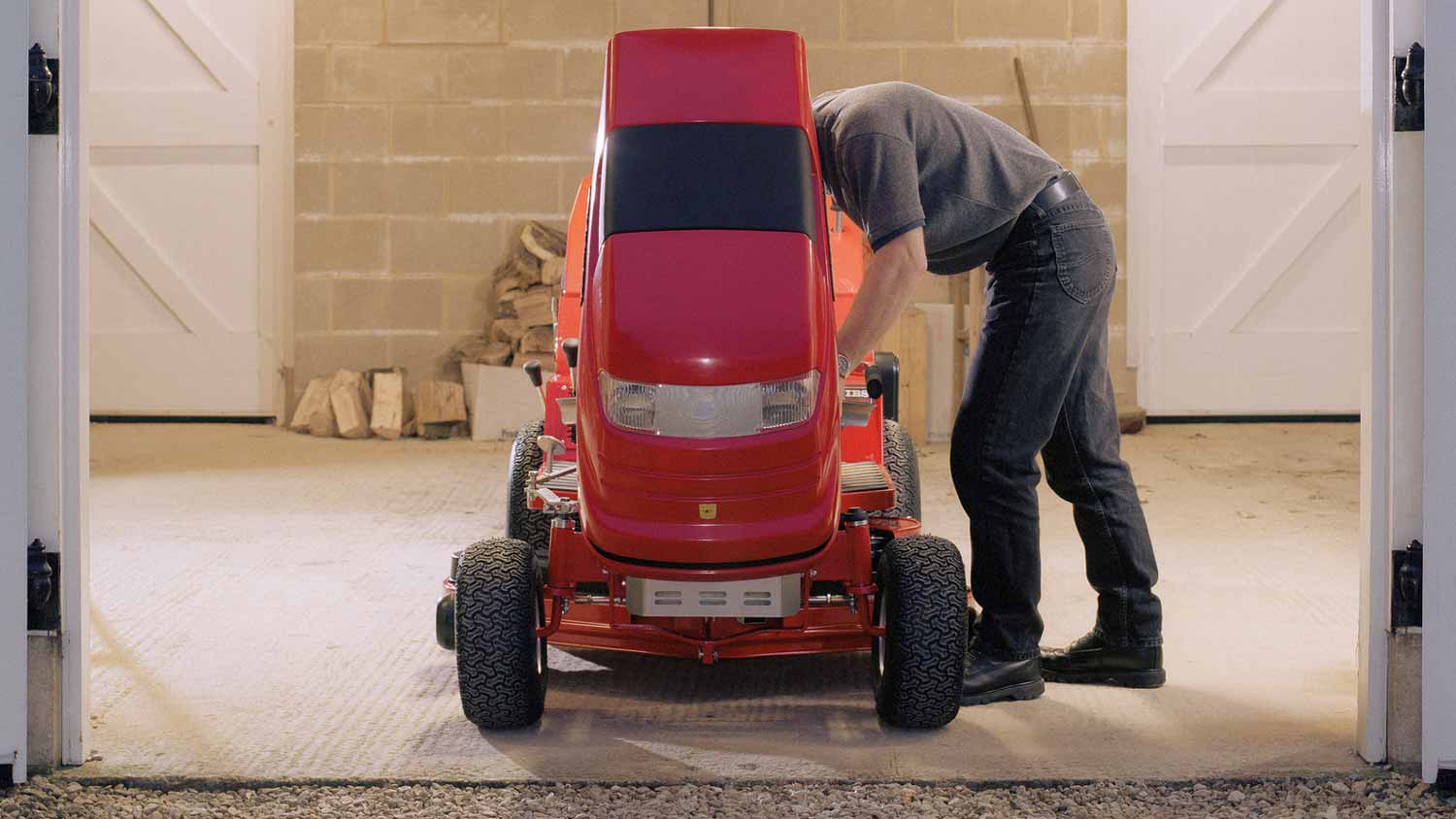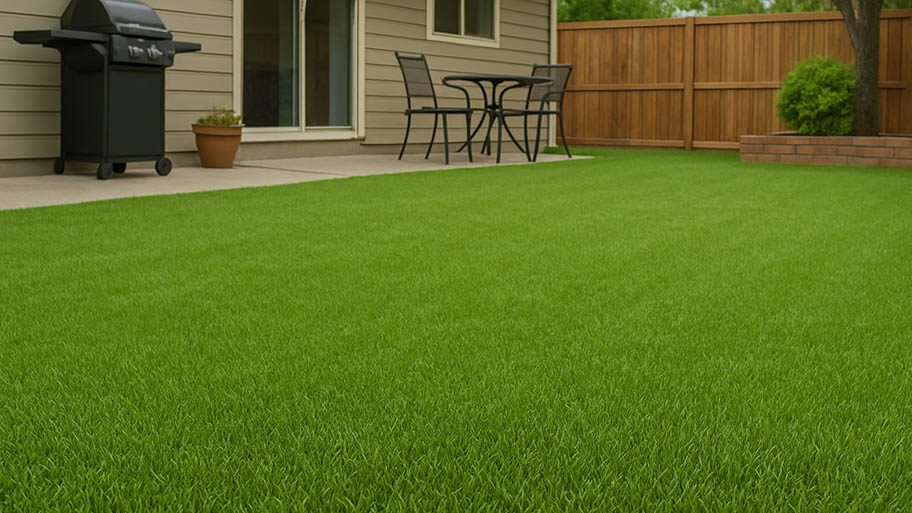
The cost to reseed a lawn can vary depending on the size of your yard and the condition of the soil. We’ll help you figure out the true cost of reseeding or overseeding your lawn, along with whether or not you should hire a professional.
You don’t have to work too yard for the perfect lawn


The cost to hire a lawnmowing service runs between $48 and $206, but it saves you time and prevents wear and tear on your own equipment.
Professional lawn care pros can do more than just mow—they can weedwack, edge garden beds, and more.
Because mowing the lawn needs to be done regularly, you can set up a schedule with a lawn service and rest easy knowing that your lawn will be taken care of for the whole season.
Imagine driving up to your home and seeing a beautifully cut lawn with clean, trimmed edges. Well, dream no more. With a few easy tips, you can learn how to mow a lawn like a pro. Follow our step-by-step guide for mowing the grass, plus some helpful lawn-mowing tips.
If you’ve ever forgotten to mow the lawn for a few weeks and returned to find an overgrown backyard, you understand the importance of maintaining a regular mowing schedule. Mowing the grass regularly offers a few key benefits:
Increases the curb appeal of your property
Improves the health and strength of your lawn
Prevents weed growth and bare spots
Allows you to enjoy activities and relaxation in your yard
Enhances the look and feel of your neighborhood
The average cost to mow a lawn is under $10 if you have a lawn mower and weed wacker. A new lawn mower costs between $80 and $3,200, depending on the type and special features. A professional lawn service typically charges between $48 and $206 per visit. Most local lawn care companies charge a flat fee per visit based on the size of your lawn. For an extra cost, they can also weed and aerate.

Having your mower and tools ready helps ensure you get the look you want without the hassle.
Before preparing your mower, turn it off and put protective wear on, Ensure your mower has enough gas or is charged (if it’s electric). You also need to ensure your mower blades are free of debris, so remember to brush or rinse away any buildup on the underside of the mower and in the blades.
You should make sure your blades are sharp, no matter the mower type. Dull blades can cause jagged cuts, which can cause browning at the tips and make it harder to cut the grass. You should sharpen your mower blades one to two times per year, depending on the size of your lawn and how often you mow. With regular lawn mower maintenance, you can achieve cleaner cuts and prolong your mower’s lifespan.
Based on your grass type, set your mower at the highest preferred setting, typically between 2 to 3 inches. Ideally, you should only cut the top ⅓ of the grass blades each time you mow. Allowing your grass to keep some height helps it grow a deep, healthy root system. Taller blades also shade the soil and prevent weeds from growing. Cutting the grass too short can shock the grass and cause the blades to focus energy on regrowing instead of deepening the roots.
It’s best to mow your grass when it's dry. Look ahead at the weather forecast for a day when there's no rain and make sure any morning dew evaporates before mowing the grass. Wet grass can clog your mower and make it harder to cut.
The best time to mow your lawn is in the morning or evening to prevent mowing during the hottest time (usually midday). Mowing at peak temperatures can cause stress to the lawn (and you). Take breaks and drink water if you feel overheated or too tired to continue.
Always make sure you have plenty of light when mowing the grass to prevent injury. If you’re mowing newly sodded grass, wait at least two to three weeks before moving to ensure the sod has rooted into the soil.
You can bag your grass clippings to prevent thatch or add them to your compost. Clippings can contribute to rich soil for gardening, landscaping, or potted plants.
You can also leave your grass clippings where they fall as long as they aren't too thick or long. This grasscycling technique helps your grass because the clippings can provide extra nutrients for your lawn.
Clear your yard of branches, rocks, toys, furniture, fire pits, tools, and other obstructions. Make sure there are no pets or children nearby. Some mowers can fling rocks and debris at dangerous speeds and cause injuries.
The final prep step is to map out your cutting path. It's best to alternate the direction you mow your lawn each time. Changing your mowing direction reduces wear on your grass and prevents blades from leaning in one direction. It also prevents ruts from forming in your lawn or soil from getting compacted. You can also mow your lawn in new patterns or designs for the same effect and a little extra fun.

The best way to mow a lawn involves cutting the perimeter, mowing in straight lines, and edging for a clean finish. Here’s how to mow a lawn like a pro.
Mow around the perimeter of your lawn once or twice to "cut in" the area. Create square or rectangle shapes for easy mowing by first taking care of any odd-shaped or small areas. Mow a path around trees, outdoor play sets, garden beds, patios, and fire pits. That way, you can maneuver the mower easier in straight rows during the rest of your mow.
Don't worry about getting too close to the edge of hard surfaces that could damage the mower, such as stones around your garden bed or brick fire pit. You can trim and edge those tight areas later.
In each rectangle or square area, start on one side and mow in a straight line to the other end. Turn your mower at the end of the row. Pivot the rear wheel of your mower and set your mower up to make an adjacent row going the other direction.
You should overlap your mower slightly with the previous stripe you just made. With most mowers, that means putting the wheels about two inches into the cut line of the previous row. Send your grass clippings (if you're not using a bag) into the previously-cut row so they don't clog your blades.
Mow another line, and continue doing so with a slight overlap on each line until the area is complete. Some lawn stripes will have blades bending slightly in one direction, while the others will have blades bending slightly the other way. This creates an alternating pattern of light and dark stripes, making your lawn look professional. You can also cut other patterns into your grass, such as a checkerboard design or zigzag pattern.
If you’re mowing on sloped ground, mow it side-to-side perpendicular to the slope to ease the wear on you and your mower. You don’t want to mow up and down a slope unless it’s a low one. If you have an angled slope in your yard, consider using a string trimmer on that area instead.
With a string trimmer or weedwacker, trim any areas the mower couldn't reach, such as near trees or the driveway. To get crisp edges along your walkways and garden beds, run your edger or string trimmer vertically along the crack or edge. The string trimmer should cut slightly into the ground as you walk along, creating a distinct line. Start from an angle that shoots the grass clippings into the lawn, instead of your garden bed or walkway. Move slowly and keep your arms and the trimmer level as you go.
Trimming and edging ensures all your grass is the same height and gives it tidy edges and clean lines. Some homeowners edge before mowing, but it can leave your lawn uneven and take more time.
With a leaf blower or broom, send any stray grass clippings from your driveway, walkways, and other landscaping into your lawn or a yard waste bag. Cleaning debris and clippings gives your lawn a nice finishing touch. Plus, lawn waste can wash into drains, leading to clogs, and can even make its way into rivers and lakes.

Follow these tips if you want your lawn to look professional, lush, and crisp.
Cut approximately ⅓ of the height of your grass each time.
Mow a slope side-to-side instead of up and down.
Mow when the grass is dry to prevent clogging your blades.
Alternate the direction you cut your lawn each time, so your grass doesn't lean.
Clean the fuel line if your gas-powered mower has problems starting or running.
Sharpen your mower blades when they’re dull or twice a year (spring and mid-summer) to prevent harm to your grass.
Check the oil levels, tire pressure, and blades a few times per season.
Mow your grass regularly to prevent an overgrown yard, weed growth, thatch, and stress to your lawn and mower.
Wear closed-toed shoes and sunglasses or protective eyewear for safety.
Wear sunscreen, long-sleeve shirts, and wide-brimmed hats to protect yourself from the sun.
You can mow a lawn yourself and get great results with a mower, edger, and a commitment to mowing regularly. But if you find your lawn sits on the back burner or you want a more polished look, consider hiring a local lawn mowing service to tackle the grass. Working with a lawn-mowing service allows you to schedule regular cuttings and maintenance appointments to ensure your lawn always looks top-notch.
From average costs to expert advice, get all the answers you need to get your job done.

The cost to reseed a lawn can vary depending on the size of your yard and the condition of the soil. We’ll help you figure out the true cost of reseeding or overseeding your lawn, along with whether or not you should hire a professional.

Artificial grass is a low-maintenance alternative to traditional turf. Learn how much artificial grass installation costs and what affects your price.

How much it costs to rent a lawn aerator depends on what kind you rent and how long you rent it for. Read on for the full details.

Discover the average flowerbed installation cost, key price factors, and tips to save on your landscaping project for accurate planning.

Don’t grab the shovel just yet. A lush lawn is within reach if you first learn how to grow grass in sandy soil. (Hint: Only certain types thrive in sand and silt!)

Kentucky bluegrass and tall fescue are two popular grass seed choices for cooler climates. Find out the differences between Kentucky bluegrass vs. tall fescue.